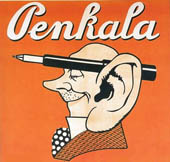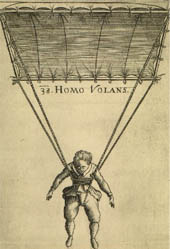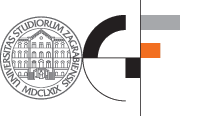Interesting about Croatia
Croatia is homeland to many inventors, top athletes and artists. Many everyday used items such as a pen, a tie or the lights are actually Croatian inventions. Here are just some of the people that marked the world with their inventions and achievements.
Nikola Tesla - inventor of the alternating current (AC)
 Nikola Tesla was born on July 10th, 1856 in a small Croatian village Smiljan. He was a physicist, inventor and an electrical engineer of unusual intellectual brilliance and practical achievement. Tesla is most famous for conceiving the rotating magnetic field principle (1882) and then using it to invent the induction motor together with the accompanying alternating current long-distance electrical transmission system (1888). His patents and theoretical work still form the basis for modern alternating current electric power systems.
Nikola Tesla was born on July 10th, 1856 in a small Croatian village Smiljan. He was a physicist, inventor and an electrical engineer of unusual intellectual brilliance and practical achievement. Tesla is most famous for conceiving the rotating magnetic field principle (1882) and then using it to invent the induction motor together with the accompanying alternating current long-distance electrical transmission system (1888). His patents and theoretical work still form the basis for modern alternating current electric power systems.
He also developed numerous electrical and mechanical devices including the fundamental principles and machinery of wireless technology, including the high frequency alternator and the Tesla coil. In 2006 Croatia celebrated a 150th anniversary of birth of Nikola Tesla. More information’s about ''Nikola Tesla Memorial Centre'' you can find at: http://www.mcnikolatesla.hr/english.html
Slavoljub Penkala – inventor of the mechanical pen and the fountain pen
 Slavoljub Penkala graduated on the Dresden University and returned to Zagreb where he accepted a state service and started a shining career. Slavoljub Penkala invented over seventy inventions in the field of mechanics, chemistry, physics and aeronautics. His most famous inventions were the mechanical pen (1906) and the fountain pen (1907). Patents were registered in over 35 countries worldwide. Between the two World Wars he ran the biggest factory of writing equipment in the world.
Slavoljub Penkala graduated on the Dresden University and returned to Zagreb where he accepted a state service and started a shining career. Slavoljub Penkala invented over seventy inventions in the field of mechanics, chemistry, physics and aeronautics. His most famous inventions were the mechanical pen (1906) and the fountain pen (1907). Patents were registered in over 35 countries worldwide. Between the two World Wars he ran the biggest factory of writing equipment in the world.
Faust Vrancic – first ever parachute jump
 Faust Vrancic, great Croatian humanist and inventor, was born in Sibenik in 1551. He used the drawings of Leonardo da Vinci to perform the first ever parachute jump. Event was recorded 30 years later in a book written by an English bishop, John Wilkins, secretary at the Royal Society in London. Title of this book was „Mathematical Magic of the Wonders that may be Performed by Mechanical Geometry, part I: Concerning Mechanical Powers Motion, part II, Deadloss or Mechanical Motions', published in London 1648.
Faust Vrancic, great Croatian humanist and inventor, was born in Sibenik in 1551. He used the drawings of Leonardo da Vinci to perform the first ever parachute jump. Event was recorded 30 years later in a book written by an English bishop, John Wilkins, secretary at the Royal Society in London. Title of this book was „Mathematical Magic of the Wonders that may be Performed by Mechanical Geometry, part I: Concerning Mechanical Powers Motion, part II, Deadloss or Mechanical Motions', published in London 1648.




